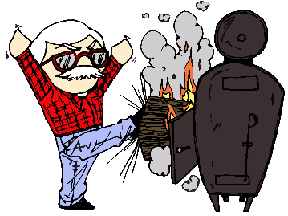Fay Butler Fab/Metal Shaping
The Connection Between the Hand and the Mind
|
 |
For thousand of years, humans have had this connection of learning and creating that goes between our hands and mind. The act of creating by using one’s hands can be very important to our continued mental growth and well-being. Craftsmen are problem solvers — creating and learning through this connection. In this connection we are generally drawing or making an object of volume. During the earliest known creative periods of man — the Egyptian and later the Roman periods — this might have been some stone building piece or sculpture. Metal was limited to gold. Today’s equivalent might be considered the outside sheet metal part of a motorcycle, aircraft or automobile. This part will show volume, which is viewed by others through the reflection of lights and shadows that we see reflected off the surface. These reflections are known as the “highlights”. The light and dark areas give the volume contrast, allowing us to see depth. When people start looking at objects more thoughtfully, what tells us that the surface is an automobile, motorcycle, aircraft, etc., are these reflections of light and dark shadow areas. |
The first step in learning a form or object is to sketch it on paper. What we are drawing will start with the very outside edges of the form. To add more detail in the drawing, you have to start representing these changes of light and dark areas — the highlights — using lines or shaded areas. Even a sketch, taking only a couple of minutes to create with very limited lines, can be very descriptive. This quick sketch can be the beginning of that connection between the hands and mind. Yet to really understand and learn the forms beyond what sketching can give you, will require the actual making of the piece. This is the strongest and oldest connection between our hands to our mind . . . an ageless way of learning. You might not realize it as the task is being performed, as often we are only concerned with the final product. As time goes on and you reflect on what you actually made, you should see that you are much further along in the understanding of the physical world around you. So my suggestion is to start drawing what you see and like. Keep these drawings simple and quickly made. Allow only a couple of minutes to make your drawing, just concentrating on the forms and those changes of light. If you want a deeper understanding, that will require actually making the object with your hands, continuing that age old connection between your hands and your mind. What you are accomplishing can be something profound and beautiful. If you have a question you'd like to ask Fay, this is the place to do it. Just click here to send an email. If you want to share your question and Fay's answer with the world on this page, please indicate that along with your question. Otherwise, we will respect your privacy and respond privately. |
|
©2005-2009 Fay Butler